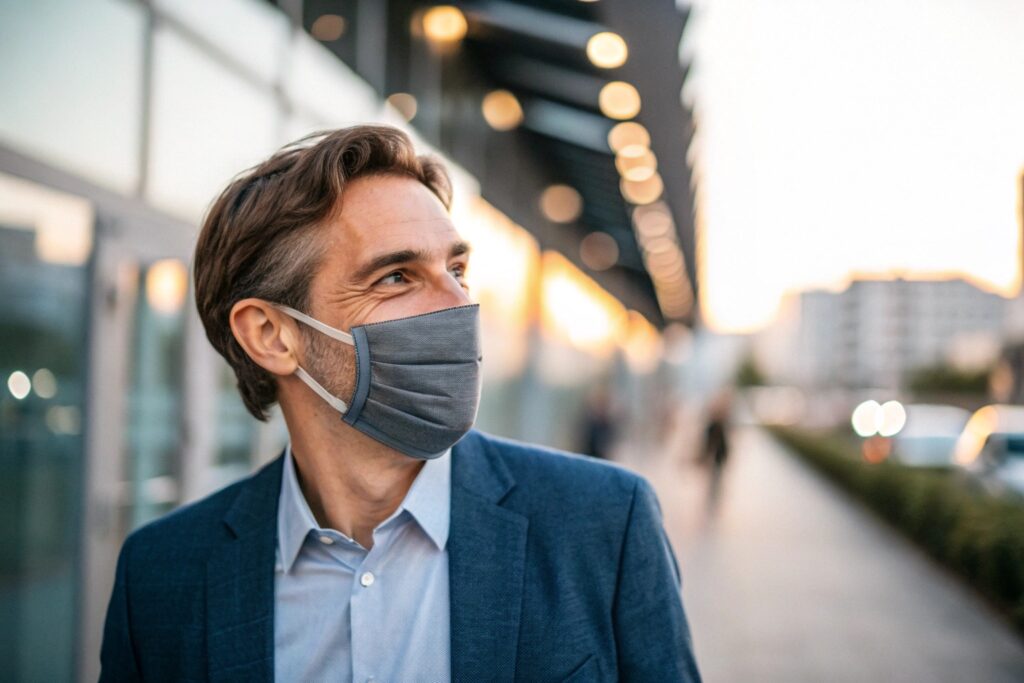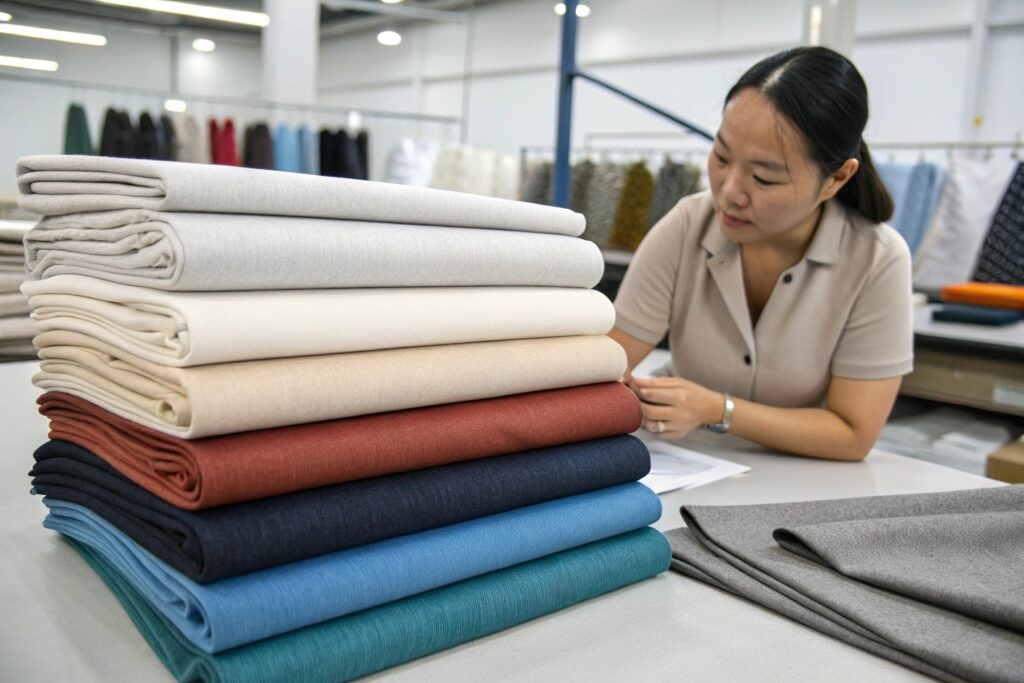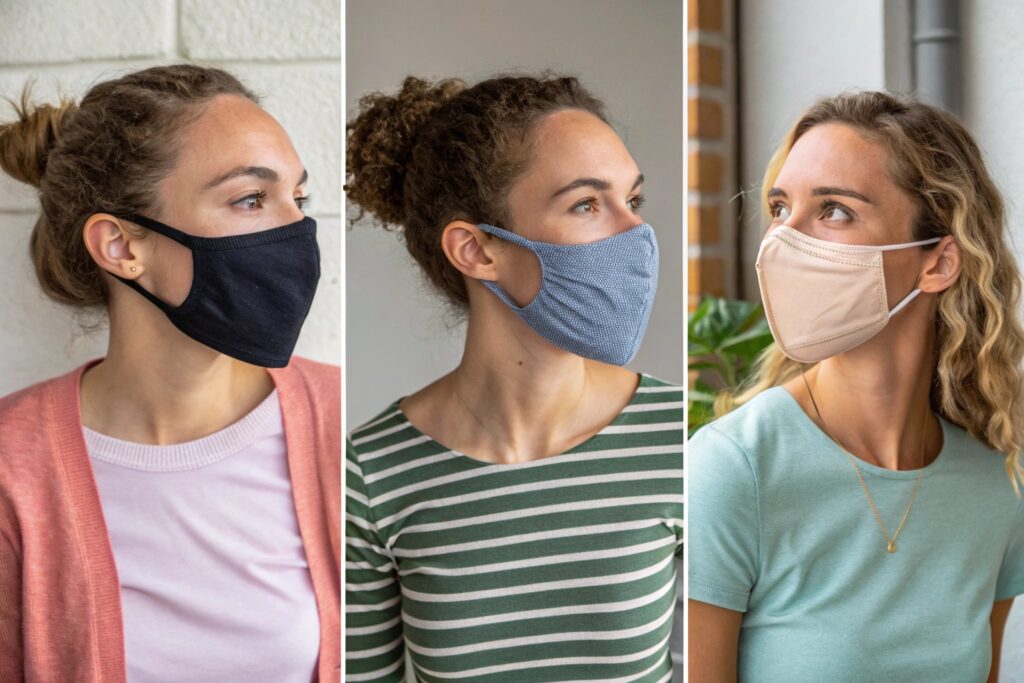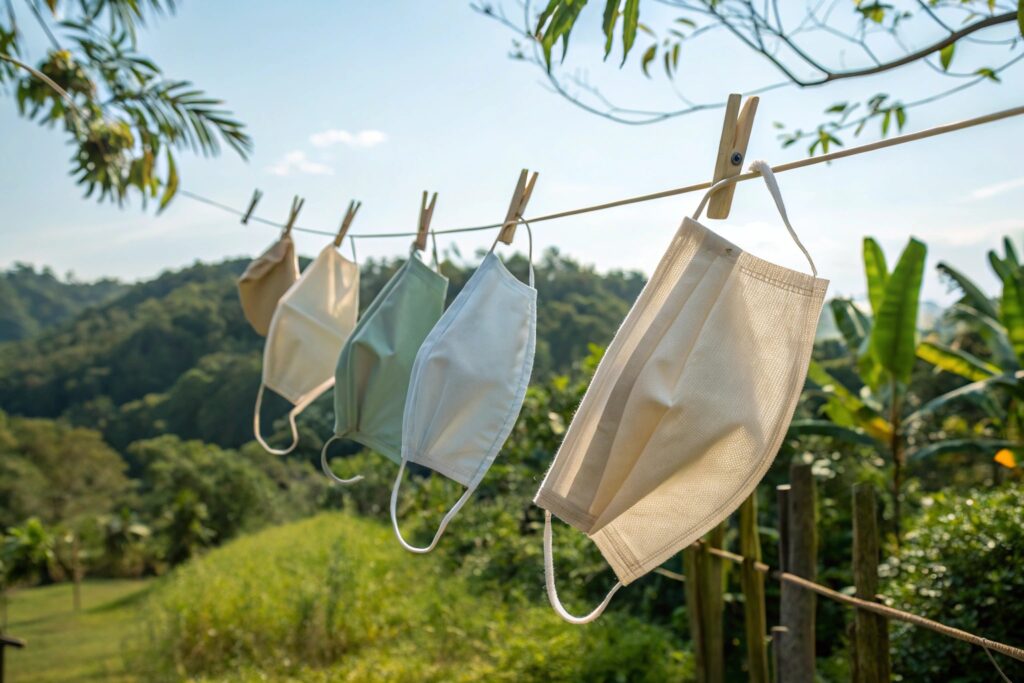When it comes to cloth face coverings, breathability is a top priority—especially for all-day wear in hot or active environments. But not all fabrics are created equal. Whether you're sourcing bulk masks or customizing for retail, choosing the right fabric can mean the difference between comfort and complaints.
The best breathable fabrics for everyday cloth face coverings include cotton jersey, bamboo viscose, polyester-spandex blends, modal, and Tencel. Each offers different strengths for comfort, airflow, and skin sensitivity.
In this article, I’ll walk you through the top fabric options we use in production for global buyers—why they work, how they feel, and how they perform in lab and customer testing.
Why Is Breathability Important for Fabric Face Masks?
Whether for casual wear, work environments, or travel, users need a mask that allows easy breathing without sacrificing structure. Otherwise, it ends up in a pocket.
Breathable fabric improves user compliance, reduces irritation, and makes all-day wear more realistic—especially in hot climates or long shifts.

How Is Breathability Measured?
Breathability is typically tested via air permeability or differential pressure (ΔP). Fabrics with lower resistance to airflow are more breathable. The ideal range for daily face coverings is below 5.0 mmH₂O/cm² according to AFNOR guidelines.
In our lab, we use instruments like the Textest FX 3300 to measure air permeability in L/m²/s. Cotton jersey usually scores highest in this metric.
What Happens If the Fabric Isn't Breathable?
Poor airflow leads to heat buildup, trapped moisture, and skin irritation—especially for those with sensitive skin. Masks may become damp, heavy, and are more likely to be removed prematurely.
That’s why many buyers now request comfort-tested fabrics or anti-moisture treatments for fashion masks intended for long daily use.
Top 5 Breathable Fabrics for Cloth Face Coverings
Let’s break down the most common breathable fabrics we use in mask production—ranked by comfort, airflow, and versatility.
The five best breathable options are: 1) Cotton jersey, 2) Bamboo viscose, 3) Modal, 4) Poly-spandex blends, and 5) Tencel.

Is Cotton Jersey Still the #1 Choice?
Yes—for most basic masks, 100% cotton jersey remains the top option. It’s soft, hypoallergenic, and allows airflow without compromising structure. Double-layered cotton still performs well under most filtration requirements.
We use OEKO-TEX® certified yarns to ensure chemical-free softness. In hot weather, this fabric allows over 150 L/m²/s airflow, far better than most synthetics.
Cotton also holds print well, making it perfect for fashion masks. See our cotton spec sheet for exact testing data.
What Makes Bamboo and Modal So Comfortable?
Bamboo viscose is naturally cooling, antimicrobial, and silky to the touch. It’s great for sensitive skin and offers airflow similar to cotton but with better moisture-wicking.
Modal—another regenerated cellulose fiber—has great drape and breathability, and blends beautifully with cotton or elastane.
We source Lenzing® modal and bamboo yarns with full FSC certification for sustainable appeal.
What Are the Best Fabrics for Stretch + Breathability?
When comfort and flexibility are equally important—think sports masks, travel masks, or activewear—polyester blends come into play.
Polyester-spandex and poly-nylon blends balance breathability, shape retention, and sweat-wicking performance. They're best for users who need movement and airflow.

Are Synthetic Fabrics Still Comfortable?
Surprisingly, yes—if they're engineered correctly. A well-knit poly-spandex blend can feel cooler than cotton and allow decent airflow.
Look for fabrics labeled as cool-touch, moisture-wicking, or mesh-backed. Our performance mask fabrics are tested to under 4.5 mmH₂O/cm² ΔP, making them compliant with international comfort standards.
Coolmax and other branded fibers offer both stretch and breathability. We often use these for sports mask orders and summer-weight products.
When Should You Avoid These Fabrics?
Avoid using polyester blends in high-heat + high-humidity areas without moisture-wicking treatments. They can trap sweat or odor if not properly finished.
We apply anti-bacterial coatings and hydrophilic finishes from HeiQ or Rudolf Group to offset this risk.
What Fabrics Combine Eco-Friendliness and Airflow?
Sustainability is now part of comfort. Breathable + low-carbon fabrics help brands appeal to eco-conscious consumers—especially in Europe and the U.S.
Tencel, bamboo viscose, and modal all offer soft, breathable performance with sustainable sourcing and low environmental impact.

Why Is Tencel a Top Premium Option?
Tencel Lyocell is known for silky softness, great moisture control, and a cool feel against the skin. It has built-in breathability due to its nano-fibril structure.
It’s ideal for high-end mask lines or wellness brands. All our Tencel is Lenzing®-certified and comes with traceability tags. The production is closed-loop, recycling 99% of solvents.
More about Lenzing’s eco process.
Do These Fabrics Cost More?
Yes—typically 20–40% higher than basic cotton. But we help clients reduce costs by blending Tencel with cotton or using it just in skin-touch layers.
For buyers targeting premium markets or eco collections, this investment pays off in user loyalty and margin expansion.
Conclusion
Choosing the right breathable fabric for cloth face coverings isn’t just about comfort—it’s about brand trust, user satisfaction, and long-term wearability. From classic cotton to cooling bamboo and stretch-fit synthetics, Asia’s fabric options are as diverse as your market demands. Let us help you build the perfect mask from the inside out—starting with the fabric your customers will feel first.


























